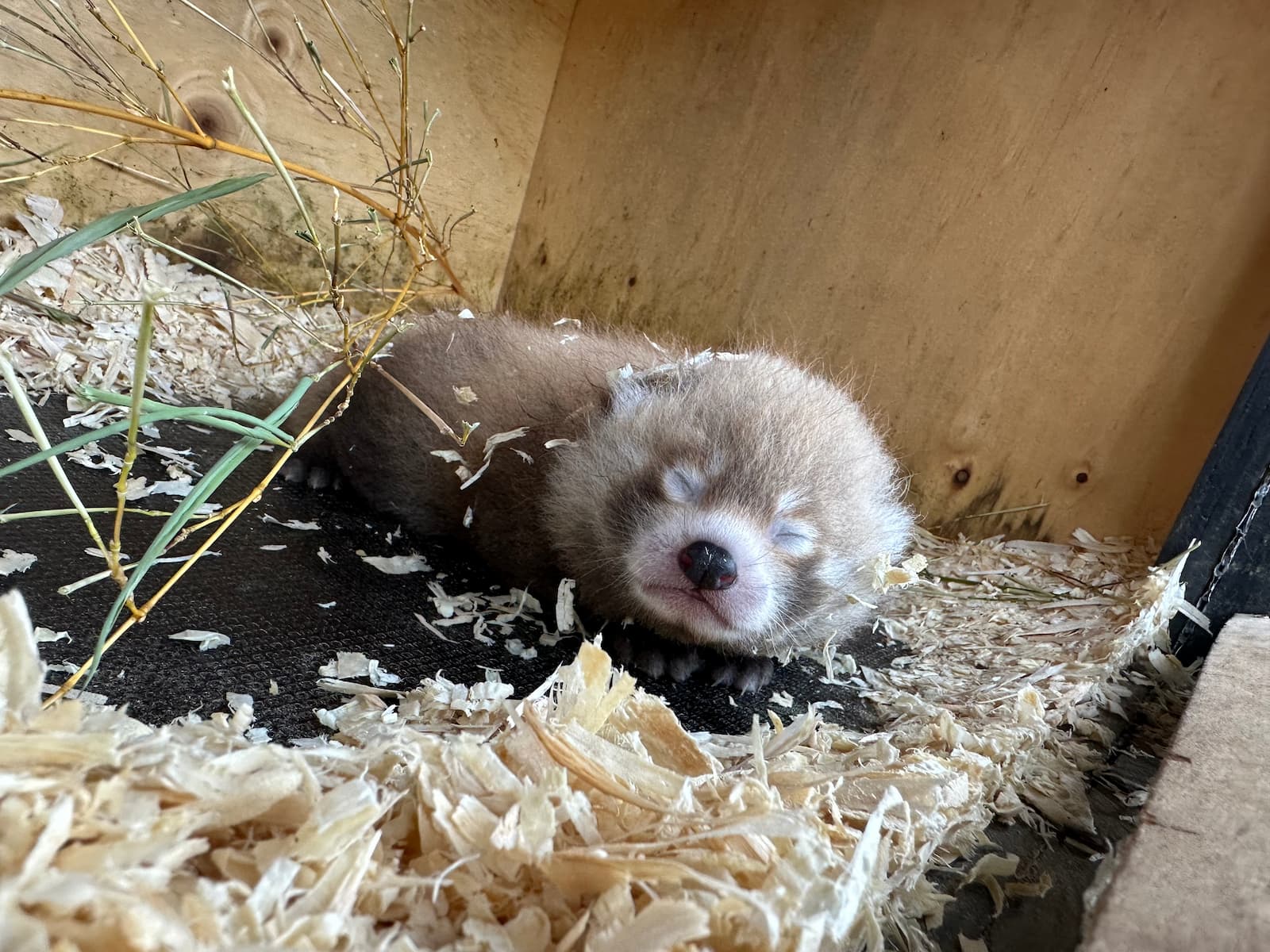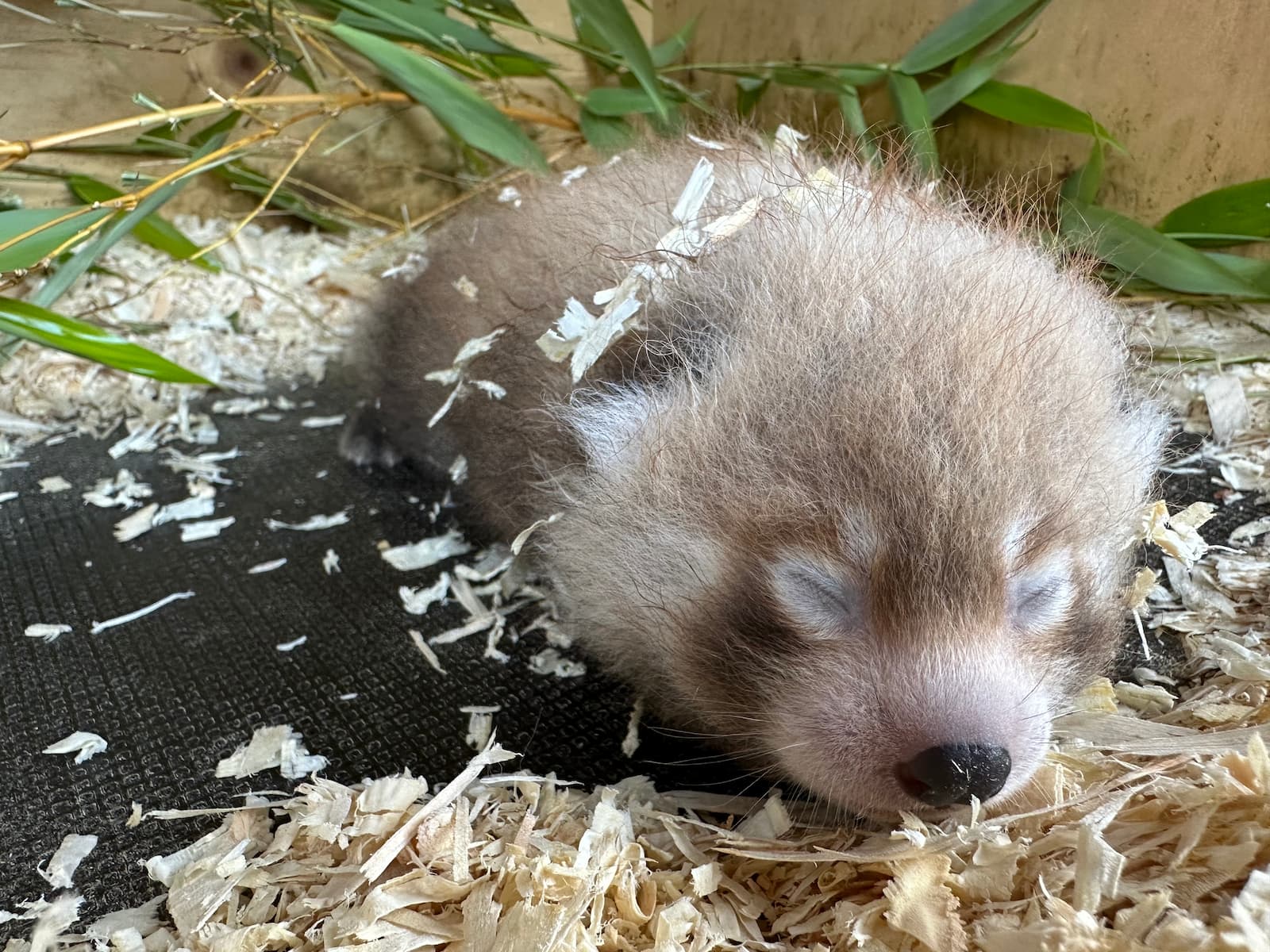
Red panda kit born at Bristol Zoo Project
Posted on: 29 July, 2025
We have some exciting news to share at Bristol Zoo Project – an Endangered red panda kit has been born to first-time parents Neora and Laya!

The kit arrived a month ago and is looking strong and healthy. It is currently being looked after by its mum in the nest box until it’s a bit older (usually around two months old) when it will emerge and start exploring the habitat. The kit will then begin to wean and become independent, at around six months old.
Some lucky visitors have already spotted the kit being carried around by mum Laya, as she moves it between nest boxes, as she would in the wild.
The birth represents a huge win for this highly threatened species, which is classified as Endangered by the International Union for Conservation of Nature (IUCN). There are thought to be as few as 2,500 individuals left in the wild, threatened by habitat loss and poaching.

Native to the eastern Himalayas and south-western China, red pandas spend most of the day resting in trees, conserving their energy. They are usually solitary creatures but come together in pairs during the breeding season.
Laya and Neora arrived at Bristol Zoo Project in 2024 as part of our critical breeding programme to help protect the species.
Neora is named after the Neora Valley National Park where animals from the red panda GSMP (Global Species Management Programme), which our red panda are part of, are being introduced back into the wild to increase the wild population numbers. Laya is named after a town and a valley in Bhutan in Asia, where red pandas are found in the wild.
Bristol Zoo Project is owned and run by conservation and education charity Bristol Zoological Society. At the zoo, 85% of the animals we care for are both threatened, and part of targeted conservation programmes. Our aim is for this to rise to 90% of species by 2035.

Want to help us save wildlife?
Become a member today for a year of wild adventure, and help protect the animals and habitats you love by supporting our conservation charity.

